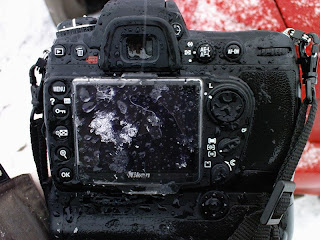 Ever since my purchase and use of the Nikon SB-400 Speedlight, I keep getting the impression its being under-utilized. Well, the bounced effect was always great, with my subject not burnt with white light due to Nikon's legendary CLS engine in the Nikon D90 but I think I am still missing something here.
Ever since my purchase and use of the Nikon SB-400 Speedlight, I keep getting the impression its being under-utilized. Well, the bounced effect was always great, with my subject not burnt with white light due to Nikon's legendary CLS engine in the Nikon D90 but I think I am still missing something here.
My recent desire to step up to the Nikon SB-600 has been subverted by a couple of professionals I came to know; and laying on the line for approximately another $250 for the SB-600 is not exactly my idea of prudent spending in a bearish economic scene like now.
So, I am reverting my ways to take a second look at "squeezing" every drop from my Nikon SB-400 before moving forward. And perhaps, my research can yield added techniques to improve our flash photography skills (without being outlandish in getting new equipment after new equipment!).
You see, top-mounted flash photography (with vertical bounce feature) is level 1. Enhancing the Nikon SB-400 with color gels (to offset "bad" light spectrum) or diffuser (e.g. from Sto-fen) is level 2. But getting a Nikon SC-28 extension cord for off-camera TTL flash photography with the SB-400 is what I consider level 3.
The above image is taken with the Nikon SB-400 at level 3. The effect can be startling! And even if you deicide to shoot with the Nikon SB-400 at level 3 with an independent flash stand, the SC-28 can reach a total stretched distance of about 1.5 meters between the camera and the flash point! There you go! Who needs that Nikon SB-600 after all?
Technical Details of Nikon SB-400: - Compact, lightweight Speedlight unit
- Operates on two AA-size (1.5V) batteries; fast 2.5 second recycling time
- 18mm angle of coverage with Nikon DX format digital SLR cameras
- Bounce capabilities in 4 steps up to 90 degrees; flash shooting distance range from 2 and up to 66 feet
- Approximate guide number of 98.4 feet at ISO 200 (at 18mm zoom head setting)
O yes, the Nikon SC-28 costs around $45.

















































